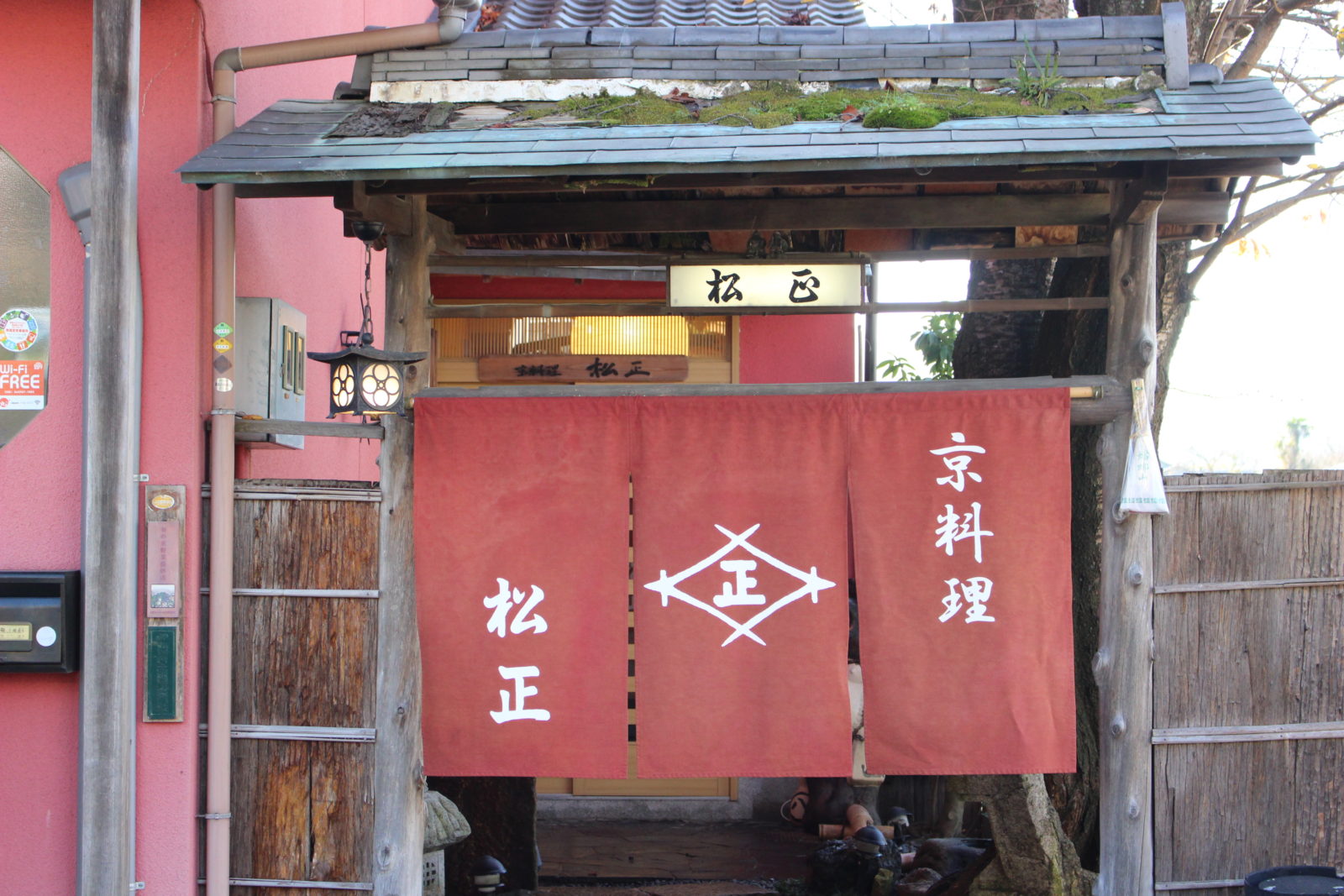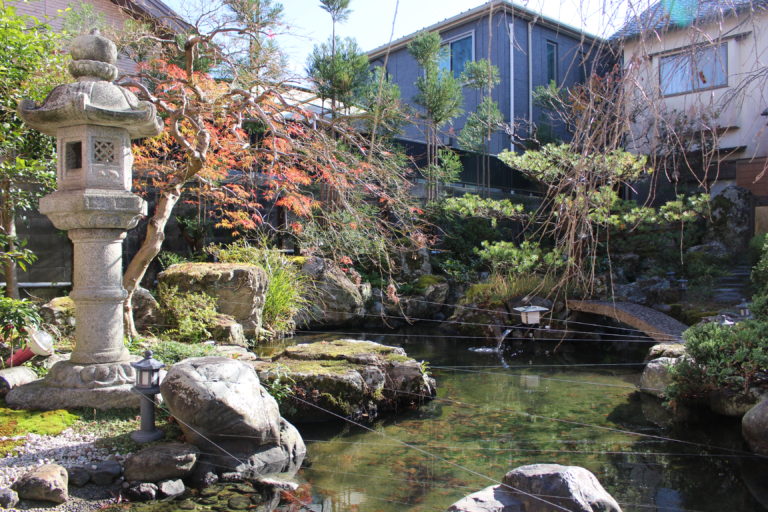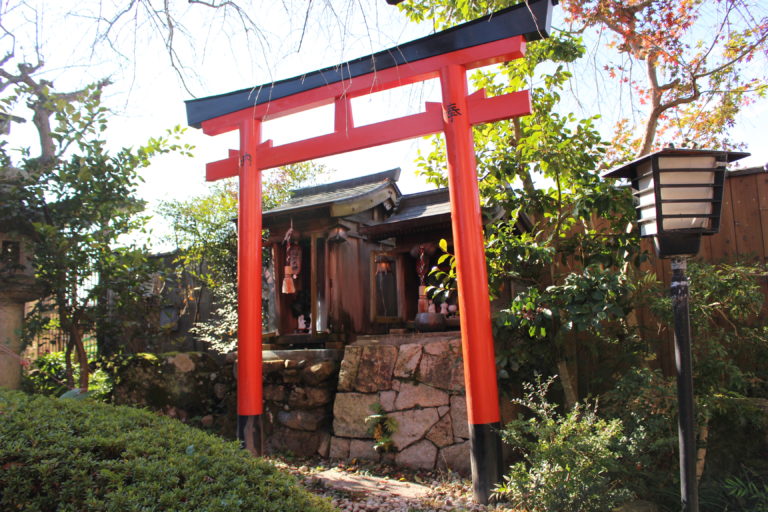Matsusho’s Cuisine

Matsusho got its start as a lunch delivery service, but when demand for lunch delivery started to decline about 30 years ago, they also started offering restaurant dining.
Ozasa’s average day starts off with making lunches for delivery. When that’s finished, he takes care of lunch service, clean-up, and then dinner service in the restaurant.
“The seasoning for delivery lunches and meals in the restaurant is slightly different, so we can’t prep them together.”
Dishes offered in the restaurant and those sent in delivery lunches may be the same, but the amount of soy sauce, salt, sugar, etc. must be carefully adjusted for each.
“It might not be obvious to most people, but that’s okay. All we want from the customer is for them to think, ‘This is delicious.’ They can let us handle the details.”
Life as a Chef
Working every day as a chef is a lot of fun for Ozasa.
“For better or worse, it doesn’t feel like a job to me. Every day feels like play. Every night I go to bed thinking, ‘I can’t wait to make food for tomorrow’s customers!’”
Ozasa says this with a sparkle in his eye, but… did he always like to cook?
“No. I thought fish were disgusting and I couldn’t even touch them until I was in high school. I thought there is absolutely no way I could gut a fish.”
Ozasa was very dedicated to baseball when he was in high school. He said that if he hadn’t come from a multigenerational family of restauranteurs, he probably would have ended up coaching baseball in a junior or senior high school somewhere.
From a young age, his family took him along on trips to the market and had him taste the different foods they prepared. At some point during all these expereinces, Ozasa thinks he subconsciously chose the path of becoming a chef. During the winter of his third year in high school, he decided to go to culinary school. He started helping in the restaurant, and was even able to start dressing fish.
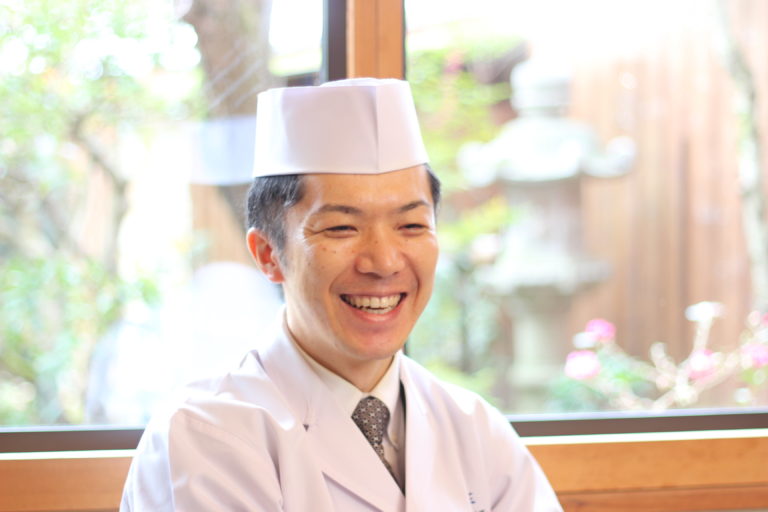
What He Wants to Communicate Through His Cuisine
“At Matsusho, we focus on serving the customers food they can only get here. So, of course, we prepare everything ourselves, even down to the pickles we serve.”
I asked about the steamed fish with grated turnip and venison Ozasa had served us that day.
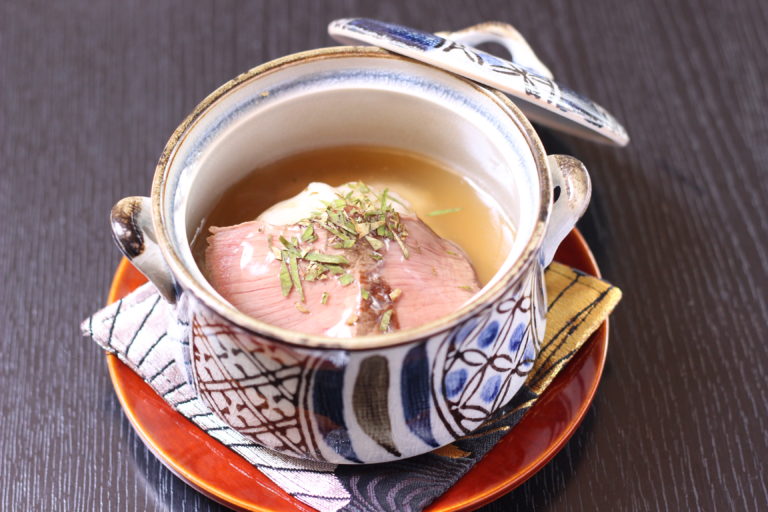
“The steamed fish with grated turnip and venison also has carrot, shitake mushrooms, and yams in it. The ingredients are an expression of the things deer usually eat in the mountains. I wanted to capture the deer’s ecosystem in a dish.”
Amid concerns for disappearing animal habitats and environmental sustainability, Ozasa said he thought about what he could do as a chef, and came up with this form of expression.
Seasonal and Local Food
Almost all ingredients used in Matsusho’s cooking are seasonal and locally sourced.
During the fall and winter, in the famous thick Kameoka fog, Tanba vegetables grow. These are ingredients the area is very proud of. Kameoka has a number of sake, soy sauce, and producers of other fermented goods, so almost all the high-quality ingredients he needs can be found right here in Kameoka.
The daily menu changes according to which local ingredient is available at the moment. Ozasa says that the menu is never exactly the same from day-to-day.
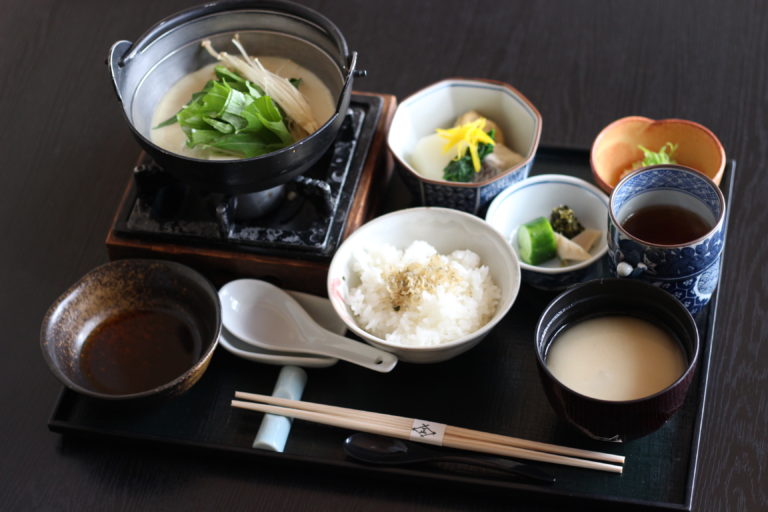
Ozasa told us that he also adjusts dishes to customers’ tastes sometimes.
“I make it a point to ask customers, ’We also have ¬so-and-so option, which one would you like?’ I also consider the customer’s age, whether they’re a local or a tourist, or if they’re a first-time customer or a regular.”
Matsusho focuses on making seasonal dishes that you can’t find anywhere else. Ozasa says that this has led to new customers becoming regulars, and them, in turn, bringing along new customers.
The Corona Crisis
Because of the coronavirus pandemic, there have been days when the seating area was totally empty.
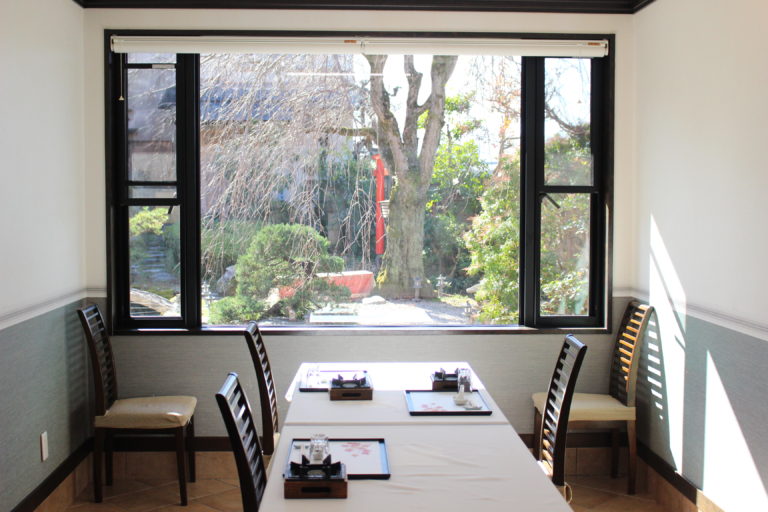
While many other restaurants have been left with no other choice but to shut down, Matsusho has relied on its original source of revenue, lunch delivery, to stay open.
Mr. Osaza is the 4th generation of his family to run Matsusho, but the challenge this pandemic presents makes it feel like he has gone back to the second generation when his grandfather was running the restaurant.
“Matsusho has faced various challenges during its long history, and it has always been able to overcome them. So, if we’ve been knocked back a couple generations, that’s fine – we can spend two more generations rebuilding.”
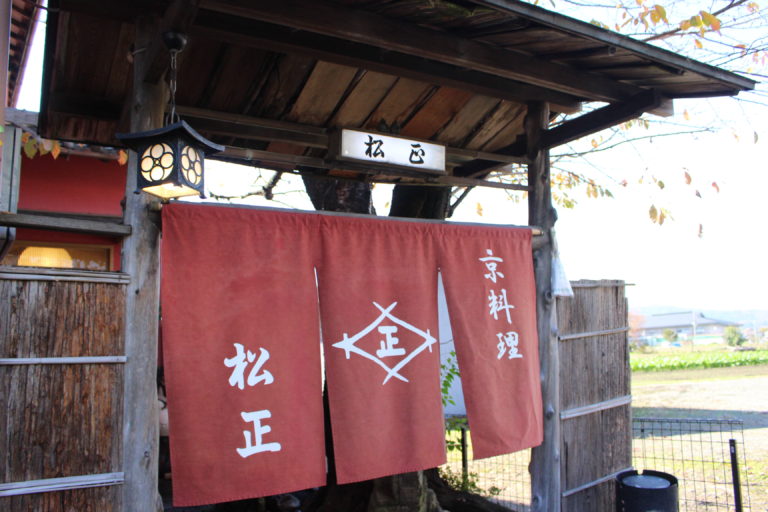
Ozasa says that one of the sources of his strength has been the philosophy his family has developed over Matsusho’s 85-year history.
“When I think about it, ever since I was little, no matter what happened, I was always told ‘We can’t close the shop.’ A chef is nothing if he can’t serve customers. So, you have to carry on, no matter what.”
Ozasa wonders if this maxim was made specifically for times like he is facing in the current pandemic.
A Desire to Bring Matsusho’s Cuisine to the World
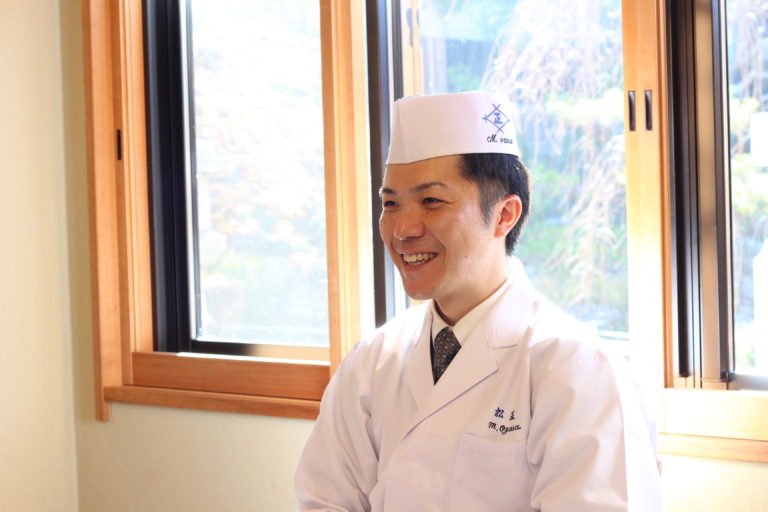
We asked Ozasa what he wants to accomplish in the future.
“What I want to do is introduce the ingredients and home cooking of Kameoka.”
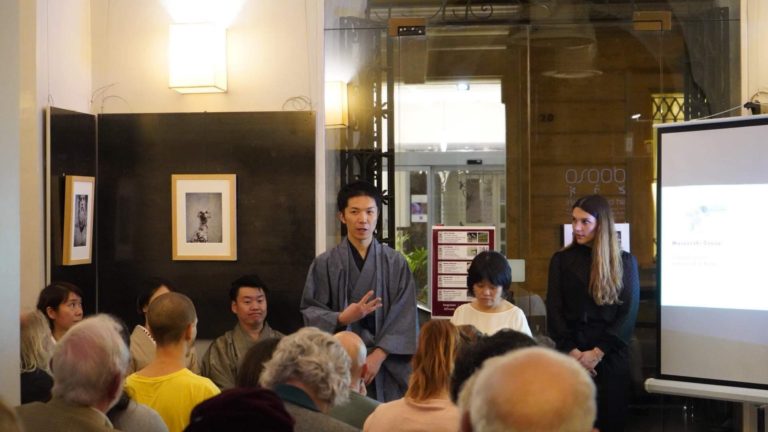
In 2019 Ozasa went to Rome with two other Kameoka natives – one a stone mason, and the other a potter. They each had the chance to tell people about their craft.
Ozasa prepared an Edo-period 4-sectioned Shokado pine lunch box for the guests.
“I wasn’t able to bring ingredients from Japan, so I spent 4 days going back and forth between the local markets and the kitchen. After fighting to compensate for the differences between ingredients in Japan and Rome, I was finally able to get it right for the main event. I was pretty proud of myself.”
After finding mineral water that was close to the water in Japan and making some small adjustments to the local produce to make them fit Japanese cuisine, he was able to make a nearly authentic Shokado lunch box.
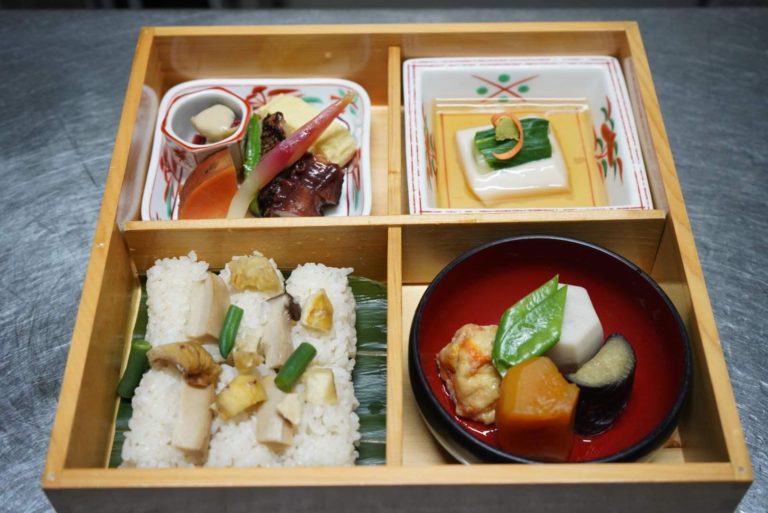
Ozasa got rave reviews from the locals. He also became friends with a local chef his age, and made plans to meet again in 2020 – this time in Japan. Unfortunately, his plans have had to be postponed due to the coronavirus pandemic.
“Once we can start moving about freely again, I want to introduce Matsusho’s cuisine in more places. And once people have found out about us, I want them to come to Kameoka and eat our food here. There are also some great sightseeing places nearby like Arashiyama and the Hozugawa River Boat Ride.”
The Kyoto-style restaurant, Matsusho, is located in beautiful Shino, Kameoka. Inside, you’ll find the faithful Mr. Ozasa, happily working the days away.
The next time you’re in Kyoto, drop into Kameoka to experience some of Ozasa’s choice Kyoto-style cuisine!

